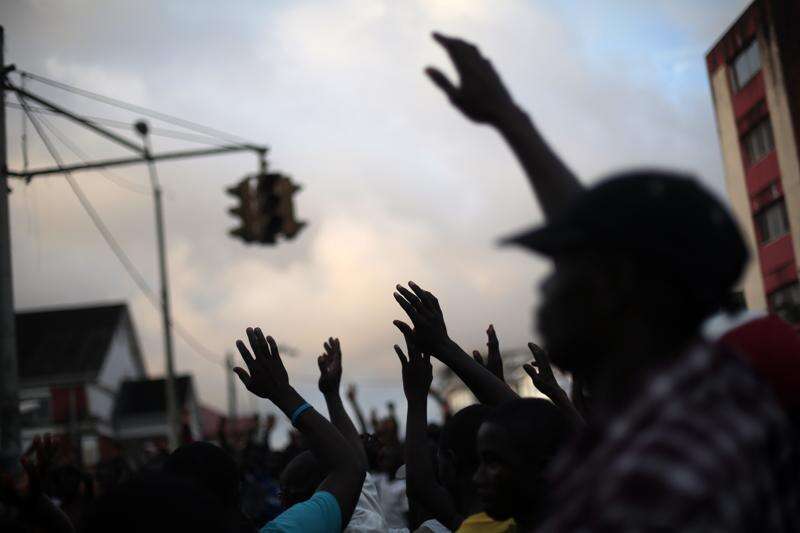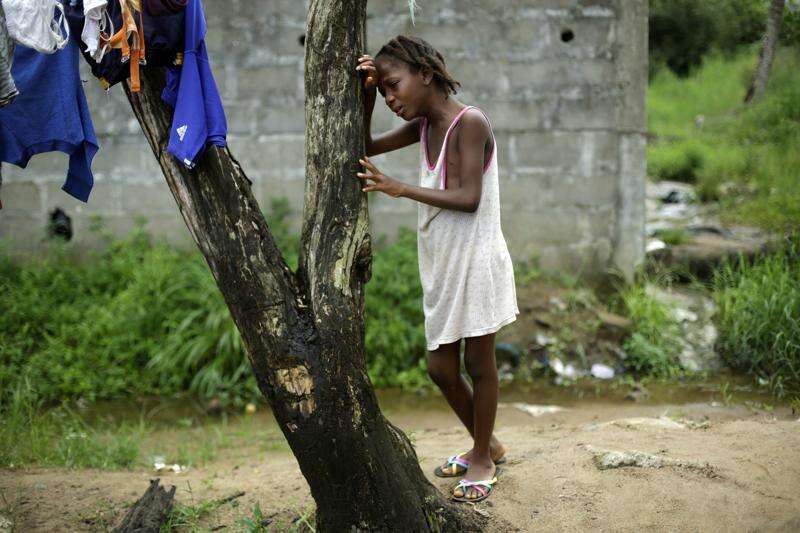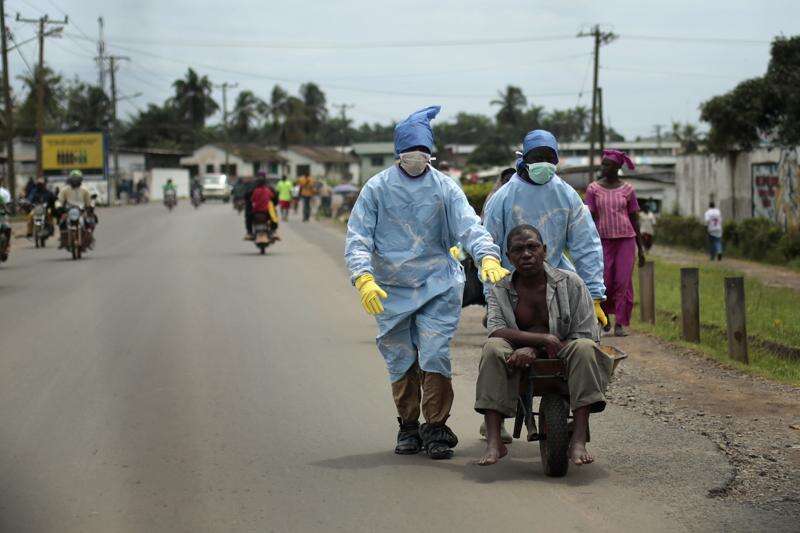Jerome Delay/Associated PressIn this Sept. 29 file photo, an MSF nurse is prepared with Personal Protection Equipment before entering a high risk zone of MSF's Ebola isolation and treatment center in Monrovia, Liberia. Six months into the world's worst-ever Ebola outbreak, and the first to happen in an unprepared West Africa, the gap between what has been sent by other countries and private groups and what is desperately needed is huge. Even as countries try to marshal more resources to close the gap, those needs threaten to become much greater, and possibly even insurmountable.
Associated Press
MONROVIA, Liberia - The biggest danger in a war zone is not seeing the enemy.
What people face here in Liberia is a war, and no one has seen the enemy.
From the balcony of the hotel that has become the de facto international Ebola crisis headquarters here, the ballet of fancy SUVs never stops. They are ferrying U.N. officials, U.S. military brass, diplomats and foreign journalists.
But never do we see the vehicles of the few nongovernmental organizations present in Monrovia, for they are out in the field, along with the underequipped ambulances and burial teams, at work 24/7 to try to put an end to the Ebola outbreak.
Covering such a virulent disease is a first for me.
I am used to bearing witness to conflicts around the continent, where I fear bullets and machetes. Here, I fear for my health. No level of protection can make you invincible.
Packing for this assignment, I traded my flak jacket and ballistic helmet for protective suits, rubber boots, gloves, goggles and enough chlorine to sanitize a 50,000 liter swimming pool.
Just like in a war zone, you try not to put yourself into a situation where you absolutely need the equipment. Here, constant spraying of chlorine and washing hands and feet to the point of obsession is the norm.
I don't want to photograph dead bodies. I want to concentrate on the living. Here, as in a war zone, they are the ones most affected. Here, like in conflict, the poor and defenseless are paying the price.
Here, like there, you try to tell a story that will have an impact and bring the ones who can act to act.
Many great visual storytellers have done tremendous work here. I just added my small part. I am leaving now, carrying the fear of the plague, monitoring my temperature constantly, and panicking at every little cough, ache or sweat.
Others are coming in to continue telling the plight of the people of Liberia. There are journalists of all media who think telling the story of humanity is well worth the risk. For without that, there is no humanity.
Jerome Delay/Associated PressIn this Sept. 27 file photo, Miamu Saryon, 7, stands in the hallway of Mawah clinic downtown Monrovia, Liberia. At left is Miamu's aunt, Linda Barlea. Miamu lost her mother, grandmother and two uncles to Ebola. After surviving Ebola herself, Miamu was unable to go home with relatives after neighbors protested, wrongfully fearing she might still be contagious. Ebola has killed more than 1800 people in Liberia this year.
Jerome Delay/Associated PressIn this Sept. 26 photo, children walk in the St. Paul's Bridge neighborhood of Monrovia, Liberia. Six months into the world's worst-ever Ebola outbreak, and the first to happen in an unprepared West Africa, the gap between what has been sent by other countries and private groups and what is desperately needed is huge. Even as countries try to marshal more resources to close the gap, those needs threaten to become much greater, and possibly even insumounable.

Jerome Delay/Associated PressIn this Sept. 27 file photo, bystanders listen to a street preacher calling on people to raise their hands and "Wave Ebola Bye Bye" in Monrovia, Liberia. Six months into the world's worst-ever Ebola outbreak, and the first to happen in an unprepared West Africa, the gap between what has been sent by other countries and private groups and what is desperately needed is huge. Even as countries try to marshal more resources to close the gap, those needs threaten to become much greater, and possibly even insurmountable.

Jerome Delay/Associated PressIn this Oct. 2 photo, Mercy Kennedy, 9, cries as community activists approach her outside her home on 72nd SKD Boulevard in Monrovia, Liberia, a day after her mother was taken away by an ambulance to an Ebola ward. Neighbors wailed Thursday upon learning that Mercy's mother had died; she was among the cluster of cases that includes Thomas Eric Duncan, a Liberian man now hospitalized in Texas. On Thursday, little Mercy walked around in a daze in a torn nightgown and flip-flops, pulling up the fabric to wipe her tears as a group of workers from the neighborhood task force followed the sound of wailing through the thick grove of banana trees and corn plants.

Jerome Delay/Associated PressIn this Sept. 28 file photo, residents of the St. Paul Bridge neighborhood wearing personal protective equipment, take a man suspected of carrying the Ebola virus to the Island Clinic in Monrovia, Liberia. Six months into the world's worst-ever Ebola outbreak, and the first to happen in an unprepared West Africa, the gap between what has been sent by other countries and private groups and what is desperately needed is huge. Even as countries try to marshal more resources to close the gap, those needs threaten to become much greater, and possibly even insurmountable.